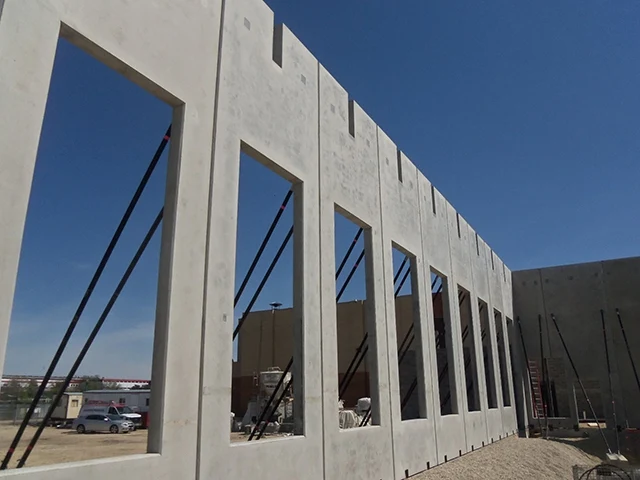Precast concrete is an excellent material to bring flexibility and durability to domestic construction solutions. It is efficient and requires very little labor making the entire process faster and curbing out the overhead cost. The concrete walls are designed separately and once completed, sent to the construction site for further application. Lifting and making the best use of concrete walls is also a crucial factor and you need the assistance of SWBV Concrete Experts
Precast walls speed up the construction process with sheer robustness. The usage of rebars or wires improves the strength with the appropriate tension within the concrete. Prestressing is also an additional factor to power up the concentration projects.
However, if you don’t use any of these additional aspects, the precast material is safe, affordable, and quick. If you wish to enhance the project potential and complete it on time, the concrete material is an ideal solution.
Types Of Precast Concrete Walls & Connections
Let’s explore some of the precast walls type and their diverse applications:
1. Curtain or Cladding Walls:
These are considered to be non-load bearing and widely used in constructing envelopes. They basically consist of spandrels, window divider units, section covers, and mullions. They cover up the space efficiently and provide all-around protection against the wind.
2. Load-Bearing Wall:
The load-bearing walls can’t be removed without compromising the quality of construction. SWBV allows the potent construction solutions with these units exchanging loads from multiple components.
3. Shear Walls:
The Shear walls are highly feasible as they are dependable on board-to-board associations. These are perfect for spaces that require equal weight contrasting frameworks.
Likewise walls, here are major precast connections types and their benefits:
1. Bolted Connections
Bolted connections are easy and quick to implement. The best part of these connections is that they can be adjusted later If required. No need to bear huge expenses again for making minor adjustments.
2. Welded Connections
The welded connections are highly popular and come with diverse applications in precast concrete. Being structurally sound & efficient, they can be adjusted to multiple field conditions. A loose plate is put between the structural plates to build connections. The precast walls are embedded with steel plates before being welded together.
3. Anchor Bolt Connections (Dower)
The dowel connections are beneficial in laying the correct foundation of the structure. They are dependent on various factors like length, diameter, and bonding with the precast members.
Advantages of Precast Concrete Walls
- The walls serve as thermal storage and assist in curbing out the peak thermal load.
- There is no need for an additional structural framing system as it offers load-bearing structures.
- They bring flexibility in the constructed house/building for future expansion as well.
- Being highly durable and of low maintenance, the walls can bear the harsh climate conditions.
- Every traditional type of facade appearance can be achieved with a thin brick veneer on the concrete wall panel.
- The precast walls can be easily manufactured by various textures like lettering, artwork, liner shapes, etc.
- The concrete panels can easily fix the electrical boxes without any hassle.
- With the usage of different types of cement, the precast walls can achieve the desired finishing and colors.
- The precast concrete walls also possess various characteristics like acoustics, moisture protection, fire safety, thermal resistance, and durability.
- With no need for distinct stud framing or drywall, the precast concrete can save a lot of money & time.
In The End
If you’re searching for precast concrete panels and other construction requirements, SWBV is an ideal solution. We are a trustworthy procurement platform already having years of industry experience & skilled professionals.


Post a Comment